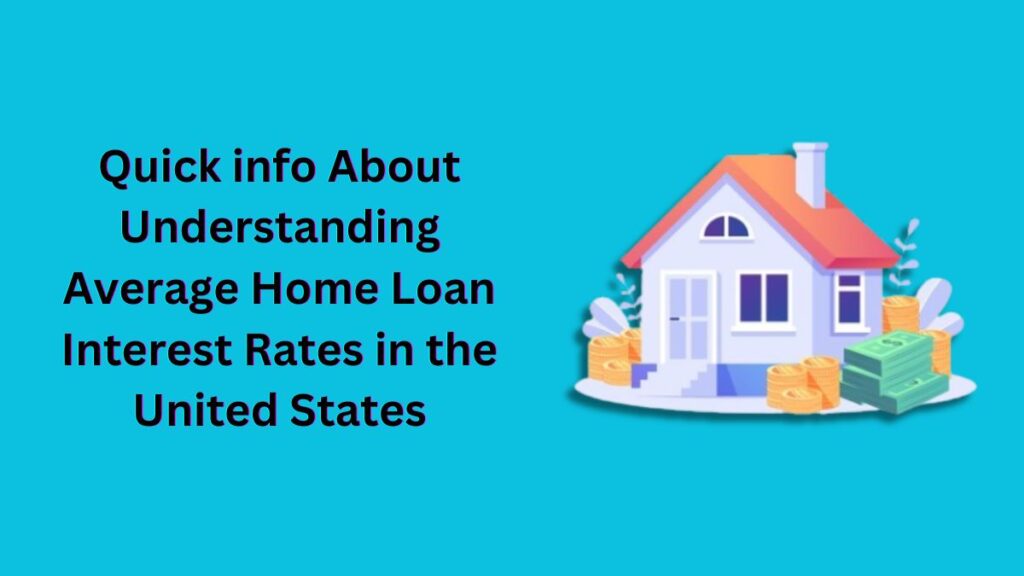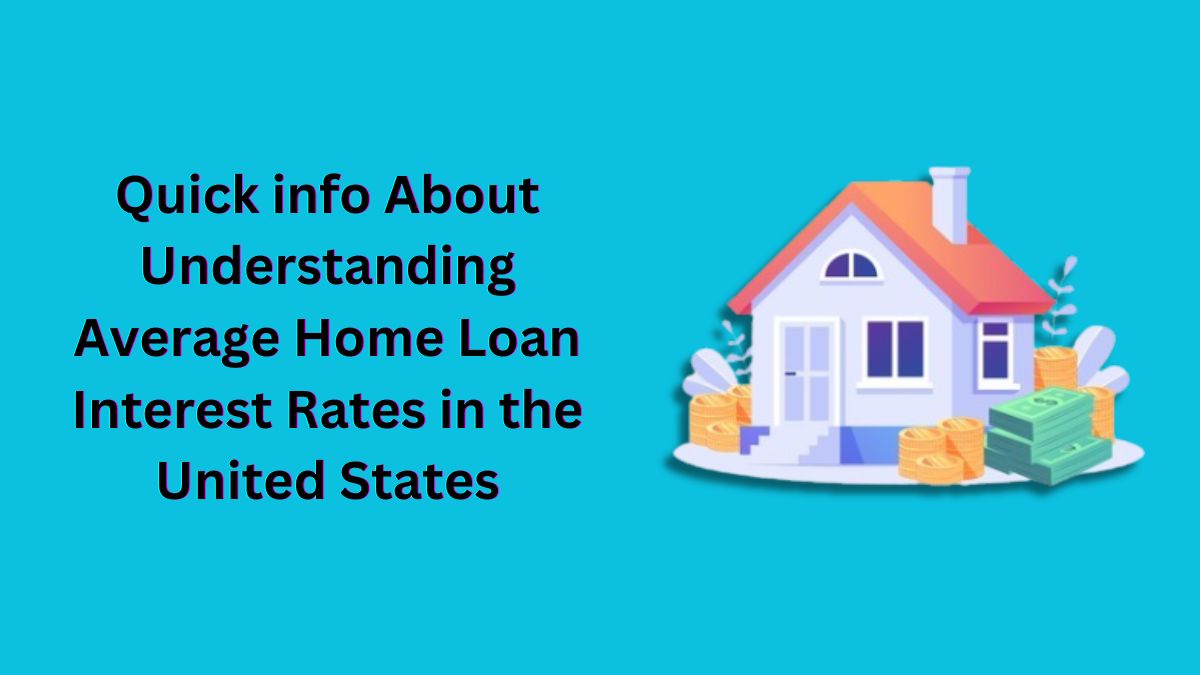In the realm of real estate, one of the most crucial factors to consider when buying a home is the interest rate on your mortgage. The average home loan interest rate plays a pivotal role in determining the affordability and overall cost of financing a home purchase. Whether you’re a first-time homebuyer or a seasoned investor, understanding these rates is essential for making informed financial decisions.

In this comprehensive guide, we delve into the intricacies of average home loan interest rates in the United States. From exploring the factors that influence these rates to providing actionable insights for borrowers, this article aims to equip you with the knowledge needed to navigate the complex landscape of mortgage financing.
Factors Influencing Average Home Loan Interest Rates
Economic Conditions
The state of the economy has a significant impact on mortgage interest rates. In times of economic prosperity, where inflation is low and unemployment rates are favorable, interest rates tend to be lower. Conversely, during periods of economic uncertainty or recession, interest rates may rise as lenders seek to mitigate risks.
Credit Score
Your credit score is a key determinant of the interest rate you’ll receive on a home loan. Borrowers with higher credit scores typically qualify for lower interest rates, as they are deemed less risky by lenders. Conversely, individuals with lower credit scores may face higher interest rates or struggle to secure financing altogether.
Loan Term
The term of your loan—whether it’s a 15-year, 20-year, or 30-year mortgage—can influence the interest rate you’re offered. Generally, shorter loan terms come with lower interest rates but higher monthly payments, while longer loan terms may have higher interest rates but lower monthly payments.
Down Payment
The size of your down payment can also impact your mortgage interest rate. A larger down payment signals to lenders that you have more equity in the property and are less likely to default on the loan, which may result in a lower interest rate. Conversely, a smaller down payment may lead to a higher interest rate to offset the perceived risk.
Type of Loan
There are various types of mortgage loans available, including fixed-rate mortgages and adjustable-rate mortgages (ARMs). Fixed-rate mortgages offer a consistent interest rate over the life of the loan, providing stability and predictability for borrowers. In contrast, ARMs typically start with a lower interest rate for a set period before adjusting based on market conditions.
Historical Trends in Home Loan Interest Rates
To understand current average home loan interest rates, it’s essential to examine historical trends. Over the past few decades, mortgage interest rates in the United States have fluctuated in response to economic factors such as inflation, employment levels, and Federal Reserve policy.
For instance, in the early 1980s, mortgage interest rates reached unprecedented highs, with some exceeding 18%. However, in recent years, rates have remained historically low, thanks in part to accommodative monetary policies aimed at stimulating economic growth.
Current Average Home Loan Interest Rates
As of [insert current month and year], the average interest rate for a 30-year fixed-rate mortgage in the United States is approximately [insert current rate], while the average rate for a 15-year fixed-rate mortgage is around [insert current rate]. These rates are subject to change based on market conditions and individual borrower factors.
It’s important to note that these average rates serve as benchmarks and may vary depending on factors such as creditworthiness, loan term, and lender policies. Borrowers are encouraged to shop around and compare offers from multiple lenders to secure the most favorable terms.
Tips for Securing the Best Home Loan Interest Rate
- Improve Your Credit Score: Take steps to enhance your creditworthiness by paying bills on time, reducing outstanding debt, and checking your credit report for errors.
- Save for a Larger Down Payment: Consider saving for a larger down payment to qualify for a lower interest rate and reduce overall borrowing costs.
- Shop Around: Don’t settle for the first mortgage offer you receive. Compare rates and terms from multiple lenders to find the best deal for your financial situation.
- Consider Refinancing: If interest rates drop or your financial situation improves, explore the option of refinancing your mortgage to secure a lower rate and potentially save money over the life of the loan.
- Lock in Your Rate: Once you’ve found a favorable interest rate, consider locking it in to protect against market fluctuations while your loan application is processed.
Must Read:-
- Quick info Understanding MetLife Insurance: Best Way’s Everything You Need to Know in 2024
- Quick Way’s For Ultimate Guide to Public Liability Insurance: Best Way’s to Protecting Your Business and Assets in 2024
Q1. What is the difference between the interest rate and APR?
Q2. How do I qualify for the best interest rate on a mortgage?
Q3. Can I negotiate my mortgage interest rate?
Q4. Should I choose a fixed-rate or adjustable-rate mortgage?
Q5. How often do mortgage interest rates change?
Conclusion
Average home loan interest rates play a pivotal role in the affordability and overall cost of homeownership. By understanding the factors that influence these rates, monitoring historical trends, and following actionable tips for securing the best rates, borrowers can make informed decisions that align with their financial goals. Whether you’re purchasing your first home or refinancing an existing mortgage, arming yourself with knowledge is key to achieving long-term financial success in the real estate market.
